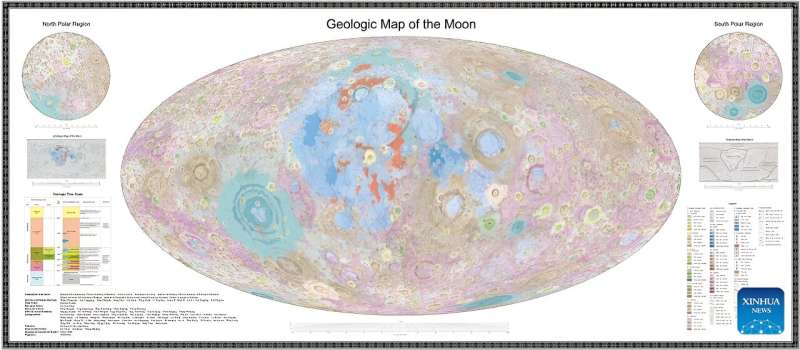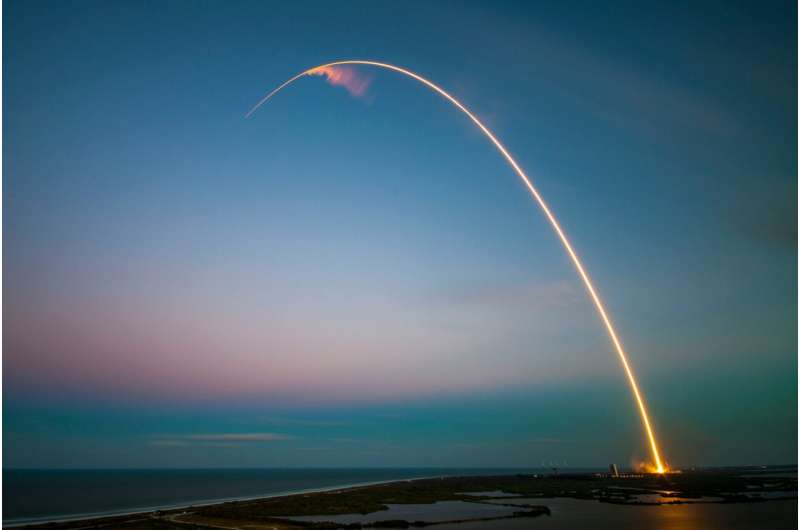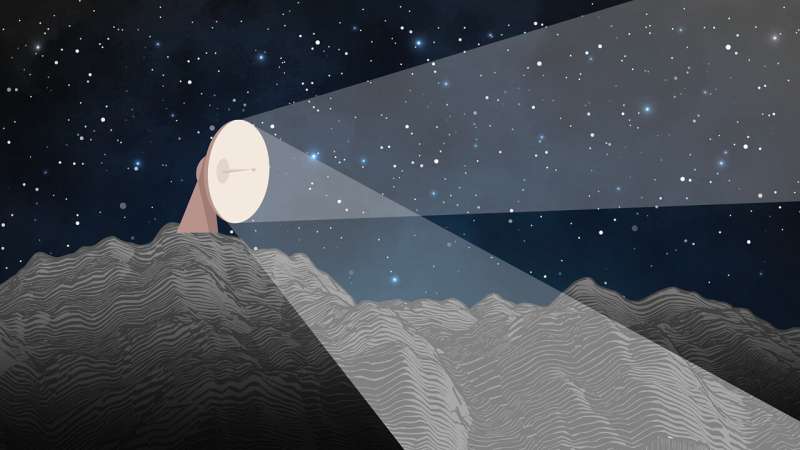
Copernical Team
Venus' extreme dryness linked to specific atmospheric reactions, study suggests
 Researchers at the University of Colorado Boulder have uncovered significant insights into why Venus, despite being similar in size and mass to Earth, contains minuscule amounts of water. Their findings were published on May 6 in the journal Nature.
The study focuses on a process called dissociative recombination, where hydrogen atoms are lost from Venus's atmosphere into space. This phe
Researchers at the University of Colorado Boulder have uncovered significant insights into why Venus, despite being similar in size and mass to Earth, contains minuscule amounts of water. Their findings were published on May 6 in the journal Nature.
The study focuses on a process called dissociative recombination, where hydrogen atoms are lost from Venus's atmosphere into space. This phe
New NASA Black Hole Visualization Takes Viewers Beyond the Brink
 Ever wonder what happens when you fall into a black hole? Now, thanks to a new, immersive visualization produced on a NASA supercomputer, viewers can plunge into the event horizon, a black hole's point of no return.
"People often ask about this, and simulating these difficult-to-imagine processes helps me connect the mathematics of relativity to actual consequences in the real universe," said J
Ever wonder what happens when you fall into a black hole? Now, thanks to a new, immersive visualization produced on a NASA supercomputer, viewers can plunge into the event horizon, a black hole's point of no return.
"People often ask about this, and simulating these difficult-to-imagine processes helps me connect the mathematics of relativity to actual consequences in the real universe," said J UAF scientist clarifies Jupiter's magnetospheric dynamics with new data
 Recent findings by University of Alaska Fairbanks scientists offer new insights into Jupiter's magnetosphere, potentially enhancing our understanding of terrestrial space weather. These discoveries could also influence the longstanding debate regarding the magnetospheric structure of the solar system's largest planet.
"By exploring a larger space such as Jupiter, we can better understand t
Recent findings by University of Alaska Fairbanks scientists offer new insights into Jupiter's magnetosphere, potentially enhancing our understanding of terrestrial space weather. These discoveries could also influence the longstanding debate regarding the magnetospheric structure of the solar system's largest planet.
"By exploring a larger space such as Jupiter, we can better understand t Rocket Lab Initiates Archimedes Engine Testing Phase Following Build Completion
 Rocket Lab USA, Inc. (Nasdaq: RKLB) has announced the completion of its first Archimedes engine assembly, the new 3D printed, reusable engine for the Neutron medium lift launch vehicle. The company has launched an intensive test campaign with several engine system activations leading up to the initial Archimedes hot-fire.
Testing will occur at Rocket Lab's engine test stand at NASA's Stenn
Rocket Lab USA, Inc. (Nasdaq: RKLB) has announced the completion of its first Archimedes engine assembly, the new 3D printed, reusable engine for the Neutron medium lift launch vehicle. The company has launched an intensive test campaign with several engine system activations leading up to the initial Archimedes hot-fire.
Testing will occur at Rocket Lab's engine test stand at NASA's Stenn NASA's Ion Thruster Expertise Sustains Satellite Operations
 In the ongoing battle against atmospheric drag in low Earth orbit, which gradually degrades satellite trajectories, the emergence of ion thrusters presents a significant improvement in space navigation. Unlike traditional propulsion systems that utilize bulky and costly chemical propellants, ion thrusters offer a lighter, more economical alternative for adjusting satellite orbits.
Establis
In the ongoing battle against atmospheric drag in low Earth orbit, which gradually degrades satellite trajectories, the emergence of ion thrusters presents a significant improvement in space navigation. Unlike traditional propulsion systems that utilize bulky and costly chemical propellants, ion thrusters offer a lighter, more economical alternative for adjusting satellite orbits.
Establis Boeing Starliner crewed mission postponed shortly before launch
 The first crewed flight of Boeing's Starliner spaceship was dramatically called off just two hours before launch after a new safety issue was identified, officials said Monday, pushing back a high-stakes test mission to the International Space Station.
Astronauts Butch Wilmore and Suni Williams were strapped into their seats preparing for liftoff when the call for a "scrub" came, because eng
The first crewed flight of Boeing's Starliner spaceship was dramatically called off just two hours before launch after a new safety issue was identified, officials said Monday, pushing back a high-stakes test mission to the International Space Station.
Astronauts Butch Wilmore and Suni Williams were strapped into their seats preparing for liftoff when the call for a "scrub" came, because eng Key Boeing Starliner test mission postponed shortly before launch
 The first crewed flight of Boeing's Starliner spaceship was dramatically postponed around two hours before launch after a new safety issue was identified, officials said Monday, in a fresh blow to the US aerospace giant.
Astronauts Butch Wilmore and Suni Williams were already strapped in their seats preparing for liftoff when the call for a "scrub" came, in order to give engineers time to i
The first crewed flight of Boeing's Starliner spaceship was dramatically postponed around two hours before launch after a new safety issue was identified, officials said Monday, in a fresh blow to the US aerospace giant.
Astronauts Butch Wilmore and Suni Williams were already strapped in their seats preparing for liftoff when the call for a "scrub" came, in order to give engineers time to i China publishes world's first high-definition lunar geologic atlas

China has released a geologic atlas set of the global moon with a scale of 1:2.5 million, which is the first complete high-definition lunar geologic atlas in the world, providing basic map data for future lunar research and exploration.
This geologic atlas set, available in both Chinese and English, includes the Geologic Atlas of the Lunar Globe and the Map Quadrangles of the Geologic Atlas of the Moon, according to the Institute of Geochemistry of the Chinese Academy of Sciences (CAS).
"The geologic atlas of the moon is of great significance for studying the evolution of the moon, selecting the site for a future lunar research station and utilizing lunar resources. It can also help us better understand the Earth and other planets in the solar system, such as Mars," said Ouyang Ziyuan, who is a CAS academician and a well-known lunar scientist.
Boeing's first Starliner mission with humans set for historic Space Coast launch tonight

The stage is set for some space history to be made tonight as two veteran NASA astronauts aim to launch in a spacecraft that has never flown with humans before.
Butch Wilmore and Suni Williams will climb aboard Boeing's CST-100 Starliner capsule and lift off atop a United Launch Alliance Atlas V rocket from Cape Canaveral Space Force Station's Space Launch Complex 41 at 10:34 p.m. on the Crew Flight Test (CFT) mission to the International Space Station.
NASA's live coverage of the leadup to launch will begin on NASA TV and its social media channels beginning at 6:30 p.m.
The pair, along with 750 pounds of supplies, would arrive to the station early Wednesday—at 12:46 a.m—to begin an eight-day stay before a return flight home as early as May 15 that would have a primary landing site of White Sands Space Harbor in New Mexico.
"This is a test flight. That brings to bear all the things that the title implies," said NASA Administrator Bill Nelson. "Because it is a test flight, we give extra attention. They're checking out a lot of the systems—the life support, the manual control, all of those things that you want to be checked out.
Shining a light on untapped lunar resources

Near the moon's south pole lies a 13-mile wide, 2.5-mile-deep crater known as Shackleton, named for Antarctic explorer Ernest Shackleton. Shackleton—and craters like it—may contain untapped resources that can be accessed with lunar mining.
Solar energy is the optimal energy source to power lunar mining since it does not need to be transported from Earth, but rather is beamed straight from the sun. The problem with using solar energy within craters is that even during the lunar day, some craters may be in complete shadow.
Led by Dr. Darren Hartl, an associate professor of aerospace engineering at Texas A&M University, researchers at Texas A&M have partnered with NASA Langley Research Center to engineer a solution using solar reflectors to get solar power to the bottom of lunar craters.
"If you perch a reflector on the rim of a crater, and you have a collector at the center of the crater that receives light from the sun, you are able to harness the solar energy," said Hartl.
